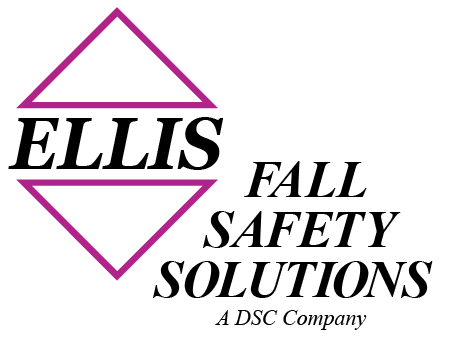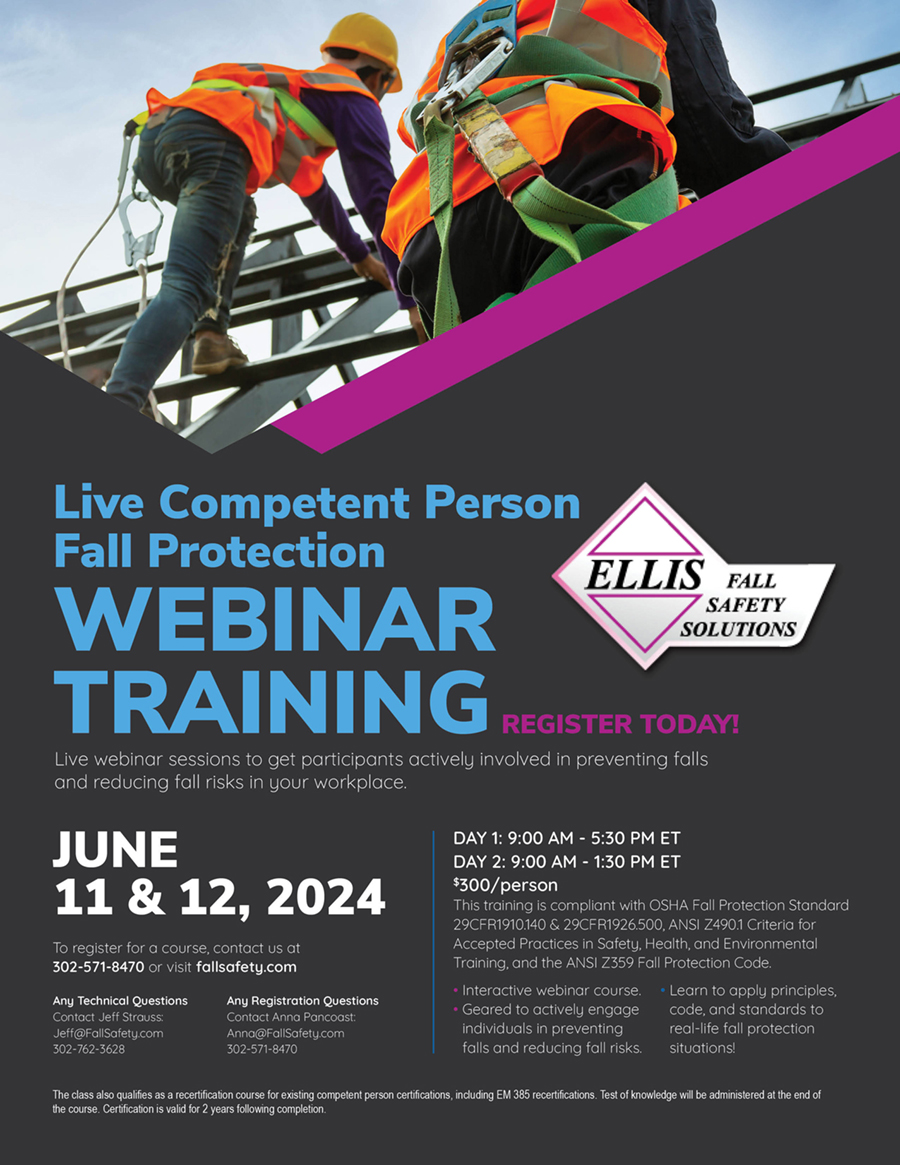Tip of the Week No. 214 – 07/21/08 – Tree Trimming
Tree trimming: Anchorages should be crotched next to a live leader that is an adequate size to provide proper strength for trimming and topping vertical trees by professional arborists who are always attached with at least one line while moving.
A two-line system should be used so one can be moved while the other is in use. Topping a tree requires extremely careful procedures to guard against whipplash catapulting a worker over the freshly cut main support.
See “Introduction to Fall Protecion, 3rd Edition” page 171.
This book is an invaluable resource for every safety manager’s library. Click here to find out about ordering a copy. Order online now.
Safety News Item – 02/23/07 – MacCollum Construction Safety Engineering Book
High-risk hazard consultant David MacCollum, with over 35 years of safety engineering experience, has written a book (published by McGraw Hill) entitled “Construction Safety Engineering Principles” about designing and managing safer job sites.
McCollum breaks the book into 3 main sections:
1. Development of the Five Principles for Safety Design in Construction,
2. Examples of Engineering Control and
3. Mechanics of Inherently Safer Design
McCollum identifies the Five Principles for Safety Design in Construction as:
1. Definition of a Hazard
2. The Standard of Care
3. Categories of Hazards
4. The Safe Design Hierarchy to Physically Control Hazards and
5. Control the Hazard with the Appropriate Design Improvement or Appliance.
This book provides a step-by-step directive for identifying and controlling potential hazards before construction begins – a methodology that can save lives, time and money.
Tip of the Week No. 69 A – 05/02/05 – Metal Corrosion
Unless metal has a large enough cross section, every steel part (of fall protection equipment)should be coated with zinc to protect it from salt, air, or other common corrosion, and to prolong its useful service life.
Aluminum parts should be anodized if the parts may come into contact with steel.
Stainless steel cables, springs and other critical parts are favored over regular steel parts, but many zinc-aluminum alloys can also work.
See “Introduction to Fall Protection, 3rd Edition” page 191.
How about ordering a copy of for yourself? Order online now.
Tip of the Week No. 82 – 09/05/05 – Safe Workplace
As we celebrate Labor Day across the United States – remember that the key way to maximize morale and efficiency among your workers is to provide a safe workplace.
Educated workers, who feel in control of their personal well-being are apt to do a better job, don’t lose time at work due to injury and are more committed to their employer and the task at hand.
To find out more about safety, and fall protection in particular, see “Introduction to Fall Protection, 3rd Edition”.
How about ordering a copy of for yourself? Order online now.
Tip of the Week No. 77 – 07/18/05 – Knots
Arnor Larson, Rigging for Rescue (British Columbia, Canada), has championed the triple-hitch knot for mountaineering rescue work, and rightly so.
When used with skill, as well as proper materials and techniques, this knot is very reliable.
But the demerits of using hitches to provide reliable personal fall protection are numerous in industry today.
Chief among them is no reproducibility.
A particular knot tied in the field, unsupervised, cannot be certified (“tested”) to meet industry standards in a given jurisdiction.
See “Introduction to Fall Protection, 3rd Edition” page 361.
How about ordering a copy of for yourself? Order online now.
Tip of the Week No. 62 – 03/28/05 – Temperature impact on metals.
Metal may embrittle at temperatures approaching -40 degrees Fahrenheit, which is not uncommom from the Central Plains to the Canadian Arctic.
Snaphooks and eyebolts should be cooled in a bucket of dry ice and then impacted with a heavy hammer to obtain qualitative results: 4140 steel has been widely used for added security.
See “Introduction to Fall Protection, 3rd Edition” page 190.
How about ordering a copy of for yourself? Order online now.
Tip of the Week No. 56 – 02/07/05 – Engineering Consultants
Independent engineering consultants are usually registered structural engineers with the ability to read and interpret engineering plans, and to document fall protection anchorages in subsequent drawings.
They may be willing to start from scratch and design a horizontal lifeline system that is non-manufactured.
They subsequently remain responsible for that system, its testing and its maintenance.
See “Introduction to Fall Protection, 3rd Edition” page 341.
How about ordering a copy of for yourself? Order online now.
Tip of the Week No. 50 – 12/13/04 – Static electricity.
Static electricity build-up and potential discharge to create a spark in mines, refineries, and similar sites establishes the need for grounding and minimizing frictional static build-up caused by lines rubbing.
Spark discharge from sudden contact between two metal surfaces is conceivable with fall arrest equuipment use.
See “Introduction to Fall Protection, 3rd Edition” page 188.
How about ordering a copy for yourself? Order online now.
Tip of the Week No. 38 – 09/06/04. Labor Day
On this Labor Day it is important to remember that worker safety starts with the employer.
A worker will follow the lead and rules of his or her employer. Demanding a safe workplace and doing what is necessary to provide it is imperative.
Not only does this provide protection to the worker, but a happy and safe worker is more productive.
A happy and safe Labor Day to all.
To find out more about safety in general and fall protection specifically see “Introduction to Fall Protection, 3rd Edition”
How about ordering a copy for yourself? Order online now.
07/09/04 – Safety News Item. Spotter not a Safety Device.
The NY Supreme Court for Erie County held that a co-worker acting as a spotter on a roofing job is not a “safety device” and therefore the employer did not meet its requirement to provide safety devices to protect against elevation-related job hazards simply by assigning an employee to be a look-out.
Occupational Safety & Health Reporter, Vol.34 No.24, (BNA, Inc. publications)
Tip of the Week No. 11 – 02/23/04. Hoover Dam.
Death is so permanent – Be Careful! (from a sign at Hoover Dam, 1931).
See “Introduction to Fall Protection, 3rd Edition” at page 1.
How about ordering a copy of for yourself? Order online now.
Introduction to Fall Protection, 4th Edition #23
Tip of the Week No. 251:
For ground-level work where trenching is to be done, fencing or other barriers should be required. Shoring with elevated panels or posts to support warning or perimeter cable are other methods used to guard an existing trench.
Excerpt from Chapter 3 – Who Needs Fall Protection? Introduction to Fall Protection, 4th Edition. Watch this website for more information about the publication date and how you can order your copy.
Tip of the Week No. 277 – 03/22/10 – Static Electricity
Static electricity build-up and potential discharge create a spark in mines, refineries and similar sites establishes the need for grounding and minimzing frictional static build-up caused by lines rubbing.
Spark discharge from sudden contact between two metal surfaces is conceivable with fall arrest equipment use.
Plastic, grounded shells for fall arrest equipment and their synthetic lines, such as a retracting lifeline, should provide protection against exterior collisions.
See “Introduction to Fall Protection, 3rd Edition” page 188.
This book is an invaluable resource for every safety manager’s library. Click here to find out about ordering a copy. Order online now.
Please select a category from the list below
- Aerial Lifts/Platforms
- Anchorage Points
- Calculations
- Construction Contracts
- Consulting
- Cranes
- Descent Devices
- Ellis Articles
- Ellis Presentations
- Equipment Maintenance
- Ergonomics/Human Factors
- Fall/Safety Statistics
- FP systems, programs
- Guardrails
- Harnesses, FP Equipment, HLL, SRL
- Hazards
- Holes/Pits
- Ladders
- Lanyards/Twin Tail Lanyards
- Misc.
- Nets
- New
- NIOSH
- OSHA News/Citations
- PFAS
- Rescue
- Roofs
- Ropes
- Safety Cases
- Safety Organizations
- Scaffolds
- Skylights
- Stairs
- Standard/Regulations
- Steel Erection
- Tanks
- Towers
- Training
- Tree Stands
- Trucks
- Tying Off
- Veterans of Safety
- Window Cleaners
- Workers Comp

